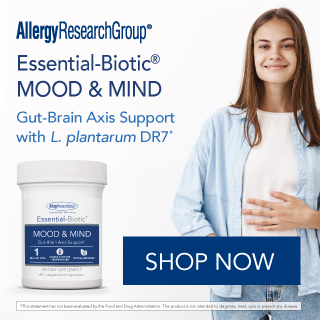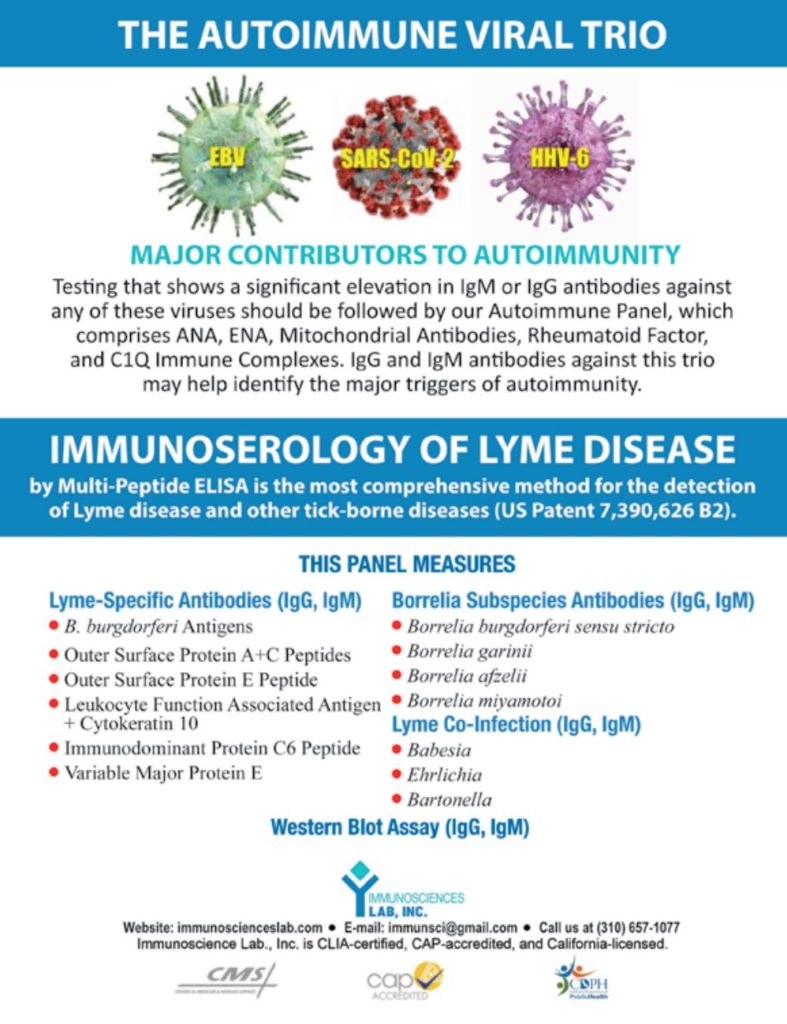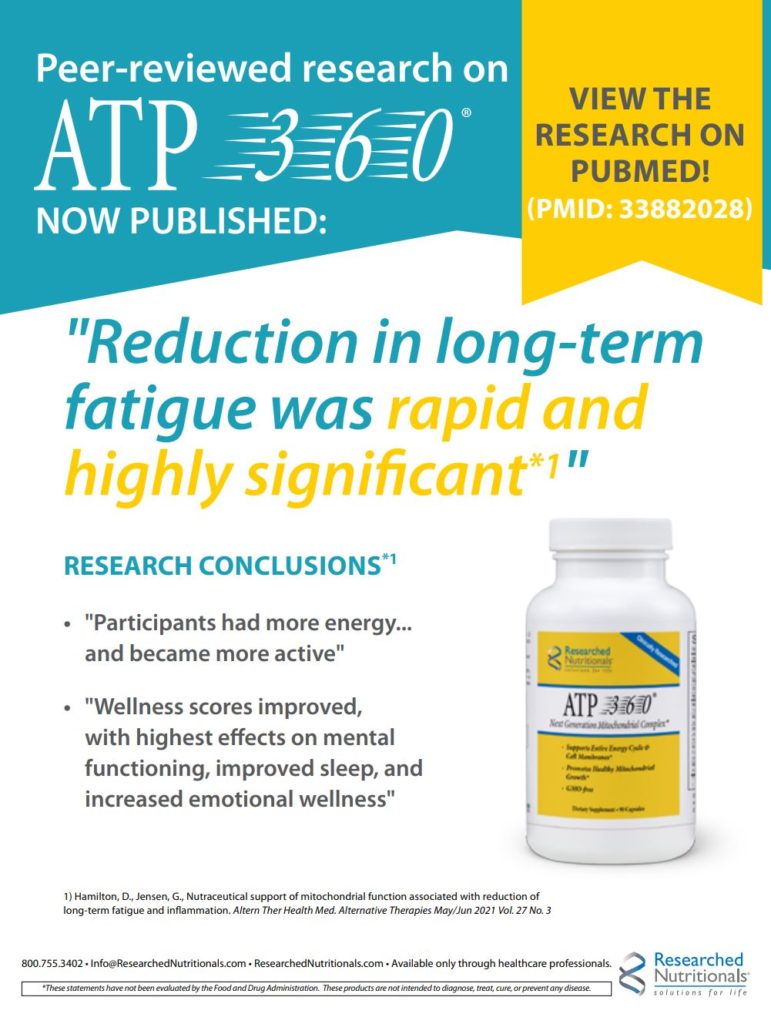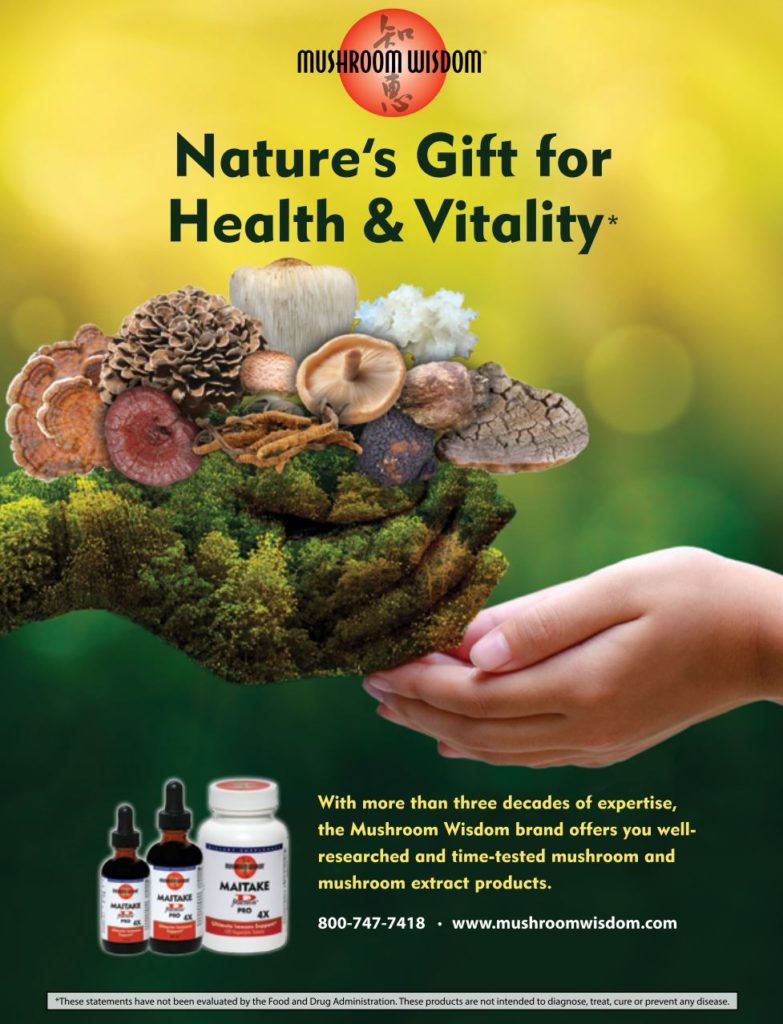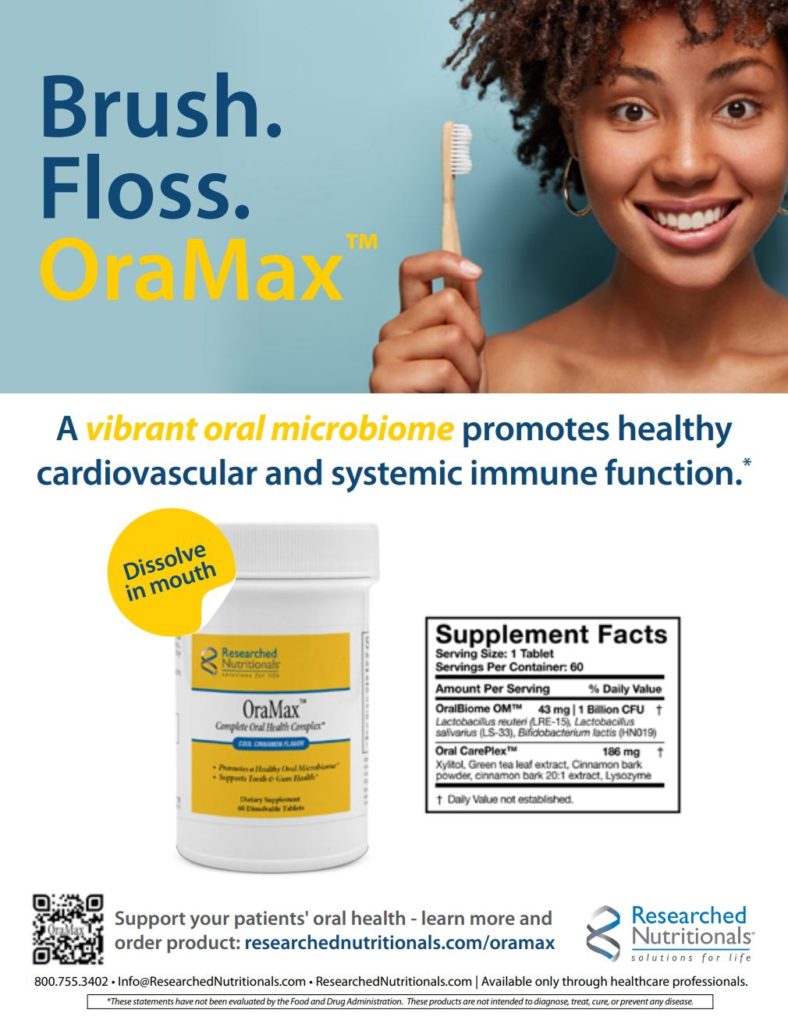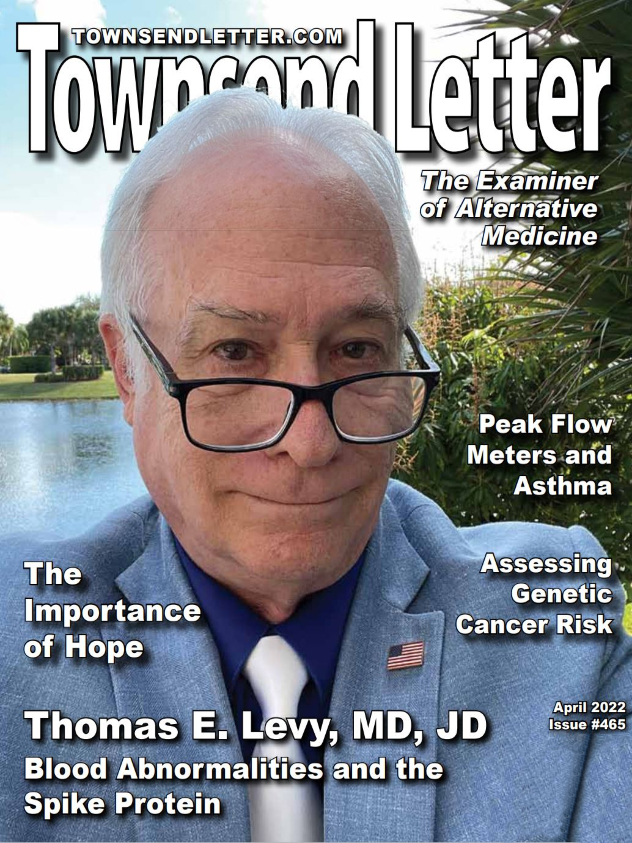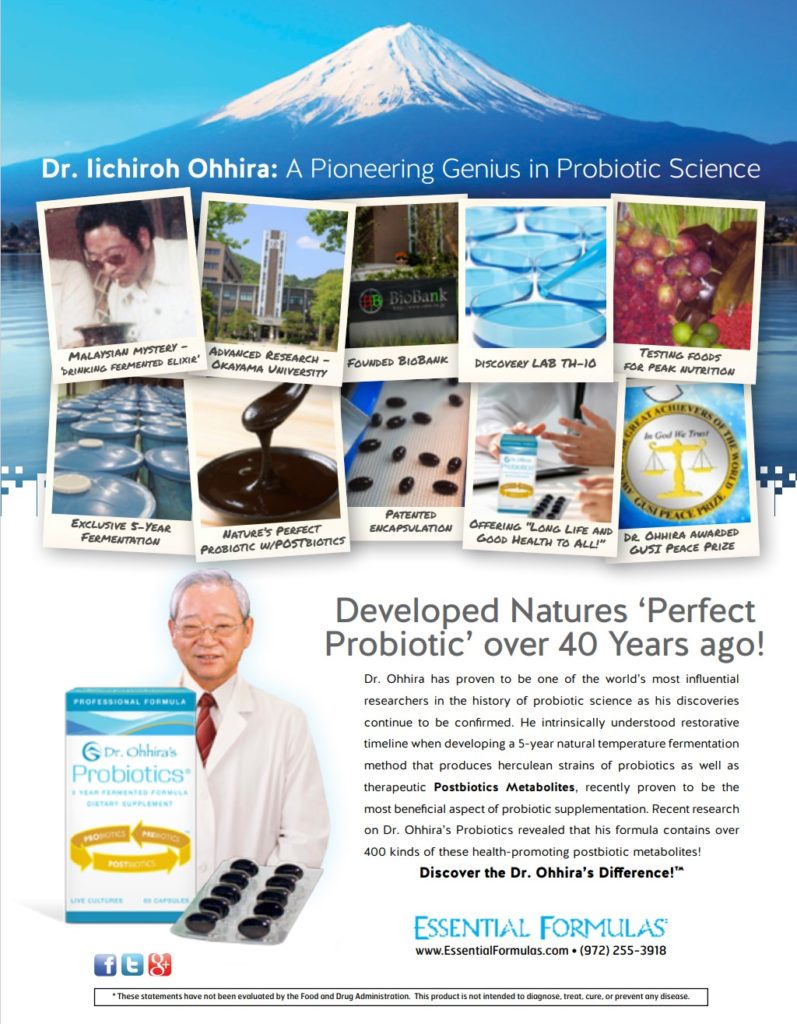By Sarah LoBisco, ND, IFMCP
The Alarming Healthcare Crisis
The present state of our world has made it glaringly evident that our “sick care” system is dysfunctional and that it has been for a while.1-7 The United States spends nearly twice as much on health care as the average Organisation for Economic Co-operation and Development (OECD) country, yet has the highest rates of suicide, chronic diseases, avoidable mortality, and hospitalizations for preventable deaths. It also has lowest rank in life expectancy compared to ten other high-income countries. Interesting, these statistics hold true even though America has the greatest number of preventative measures, such as breast cancer screening and flu vaccinations in those over 65 years old.4 With some of the most expensive technologies, largest amounts of screening, highest medical costs, and resultant dismal results, the US medical care model was already struggling with a heavy load heading into the pandemic.1-7
Furthermore, the current crisis has magnified America’s healthcare inadequacies and inequities. Older age, underlying medical and psychiatric conditions, racial and ethnic disparities, and socioeconomic status are the major risk factors for developing severe COVID-19 symptoms.8-16 As if the traumatic events on the health system were not enough to handle, a disturbing and simultaneous spotlight on the issues of racial injustice, biases, and social determinants of health also have been brought to the forefront.8-10, 17-18
All these events have pushed and strained our healthcare system to its limits. The unrelenting demands on health care providers have led to burn out, a rise in mental health issues, and disagreement with administration regarding resource allocation and management of the situation.19-23
Many physicians have taken this opportunity to raise their voices in frustration regarding the inadequacies of the current “sick care” model. The importance of nutritional, lifestyle, and personalized approaches to enhance wellness and resiliency have been exalted for years in the integrative community. Yet, they have often been brushed aside by conventional medicine as aggravations. No longer can they be dismissed.
It has never been more obvious that now is the time to transform our medical care approach. Health promotion and prevention should take precedent over disease management. Collectively, we should be aiming to enhance our health and boost our vitality. Sitting on the side lines helplessly and anxiously waiting for a disease to be contracted is not acceptable.
The current approach has not worked. Consumers are seeing this. Early in the crisis, when conventional wisdom didn’t have much to offer as proactive measures, many took matters into their own hands and pocketbooks.24-27
The Emergence of Caring About Health
One “win” for natural medicine during the pandemic is that various holistic approaches and active patient involvement is being promoted by many physicians on a much larger scale, and with a growing audience. Suggestions for more comprehensive, inclusive, and integrative chronic disease management, public health measures, and treatment options have been brought to the table. Attention has shifted to integrative and alternative medicine as legitimate means to better one’s health and support defense and repair processes.28-32 According to the press release by Report Ocean on the Global Complementary And Alternative Medicine Market Report, “The global Complementary And Alternative Medicine Market is forecast to grow at a compound annual growth rate (CAGR) of 21.8% during the forecast period from 2021-2027.”30
Purchases of nutritional supplements and investment in wellness are also on the rise.24-27 In fact, in one small survey in May 2020, 36% of consumers reported using more supplements post-pandemic, and 39% said they expected to continue with this elevated use.24-27 This exponential increase drew attention when supply chains got disrupted and backorders became a headache for many practitioners.24-25
Unfortunately, legal actions against practices for “unsubstantiated claims” on various supplements have been the modern day “dark side” for integrative healthcare. As with any specialty, money-making opportunities can sometimes cloud one’s ability to effectively communicate objective data. On the flip side, those with pure intentions to spread helpful information have also found themselves in hot water.33-35

Leaving the regulations and legalities aside, it is now more recognized that various holistic health measures that optimize wellness and address the underlying risk factors can be complementary and provide benefit to the issue at hand.28-29, 31-32 As a result, integrative organizations have distributed research-backed recommendations and guidelines to their members for integrating herbal and nutraceutical interventions, lifestyle practices, stress management, and enhancing social connections into their practices. (All with the disclaimer that they are to be used in conjunction with governmental recommendations, of course.)31-3
CDC (Centers for Disease Control and Prevention) and WHO (World Health Organization) preventive measures and vaccine promotion have been the mainstream. Still, edging into a lot of the conversation is the awareness that stress management techniques, healthy eating, and other lifestyle measures to support cellular health, inflammation, and immune modulation can help to promote health and provide one with a better chance of staying out of the hospital.31-32
The Big Losses for Natural and Integrative Medicine: The Divided States of America
Initially, there was a sense of hope in the integrative medicine sphere. The “wins” above were something to celebrate and the worldwide crisis seemed to be bringing together a sense of cohesiveness. Society joined together and convinced themselves that stopping their everyday lifestyles and staying home for a “two-week flattening of the curve” was something that made sense and was the responsible thing to do.36 People joined together to do one of the hardest things in modern society… stop.
They stopped going to work, they stopped commuting, they stopped their everyday lives. With this, brought its own challenges, but regardless, in the beginning, gratitude prevailed and healthcare providers were deemed heroes.37
Who knew that a few months and a few years later, a viral contagion would bloom into a divided and polarized world full of fear and sadness?17 This division is not only preventing a full integration of the “best of both worlds” in medicine but is tearing apart families, friends, worsening mental health, and resulting in physical symptoms.17, 38-42
What once was about health now has spread to become a political, moral, and ethical disagreement. People who once nurtured each other and shared freely are compelled to guard their stances or stay silent. Friendships have been disbanded over arguments on how to address things, what one considers the bounds of individual freedom are, and what side of “science” is the right one to follow. 17, 38-42 The resulting social unrest, fear, and individual isolation has been profound.
It is heartbreaking.
How many doctors are seeing patients or clients whose families no longer speak to them or will let them see their grandchildren based on politics or a medical decision… on both sides? Am I alone in witnessing this?
Some could argue for or against these “necessary splits” and why it is appropriate for others to hold each other accountable. This is not what this article is about, nor would I pretend to be an expert in medical ethics or political science. However, I do wish the collective “we” was handling things in a way to create more community and unity.
A common problem that could have brought communion into the world and the United States is now one of the most polarized issues of our time. As one of my favorite 12-year-old clients succinctly puts it, we are living in the “Divided States of America, Dr. Sarah.” She nailed it.
I don’t think any leader can sweep in to save us at this point.
I think it must start with us.
As doctors and wellness advocates, I do feel that we may have a role in the solution that is bigger than we are aware of. People are looking to their physicians for guidance and support. We can either step out of the societal trance of fear provocation or add to the emotional and societal turmoil.
I believe the repercussions of how we handle and are handling this situation, if not done well, could end up being as much, if not more harmful, then the virus in the long-term.
Without a society that is supportive, without families that are loving, without people connecting and listening to other’s reasoning, what world will be left to live in?
We must start sucking out this poison through one kind patient or interaction at a time. Along with all the environmental contaminants we are trained to deal with through avoidance and modulating detoxification, this toxin is one of the biggest polluters of life-sustaining properties that we have come up against in a long time.
The Right and Wrong Focus
As holistic and integrative medical professionals, we are taught to address the whole person, to seek out the cause of the dis-ease.
For COVID-19, many integrative doctors are focusing on the physical aspects of risk mitigation. This is important, but it shouldn’t be the main narrative. The biggest predictors of overall mortality aren’t exercise and diet, they are social connections and social determinants of health.43-46
Perhaps this narrowed focus is because it is much easier to control what patients put in their mouths and what exercise routine they should follow then it is to have the uncomfortable conversation of food accessibility or a home life of verbal abuse. It’s way easier to get into the nitty gritty of a “perfect elimination” diet than to discuss a family division that is making someone so anxious that their IBS (irritable bowel syndrome) has become out of control. A FODMAPs diet can’t fix that, my friends.
Thankfully, functional and naturopathic physicians are offering more group visits, community support, and stress management programs.47-48 Yet accessibility and speaking about the “deep issues,” beyond diet, lifestyle, and managing overwhelm within these groups is still sorely lacking in my opinion.
Missing almost completely in the mainstream and integrative medical communities is the promotion of patient empowerment and positive affect. There is not a narrative for promoting hope for a reason. In conventional medicine, it is taught that hope can be misleading and alter unfairly the patient’s expectations, right?
I propose as a collective we may be doing more harm than good with this belief. In fact, we may be negating the benefits of lifestyle measures and group gatherings if we are literally scaring the health out of people, even with the best intentions.
The Feardemic – An Unseen and Major Risk Factor
It’s an interesting chicken and egg scenario. We know that mental health disorders are on the rise and worsening because of the pandemic.49-56 We also know that those with mental health issues are more at risk for severe COVID-19.55-58 Even before the current crisis, psychiatric treatment results, similar to conventional medicine, were not in a good spot.49-64
Recently, Mental Health America (MHA) assessed fifteen psychiatric health measurements from national surveys, compiled the results, and compared their incidence across the states.50-52 Prior to the traumas and uncertainties of the events of 2020-2021, approximately 20% of Americans experienced mental illness.50 This equates to approximately 47 million people! The state prevalence ranged from 25.25% in Utah and 16.14% in New Jersey. Furthermore, many were avoiding treatment due to the associated stigma, accessibility, and/or shame of a mental health diagnosis.51-52
Sadly, access to current treatments have also been inadequate to meet sufferers’ needs. About 11% of Americans who need mental health support are uninsured, and only about 27% of youth with severe depression receive constant care.50
Even more disturbing, the MHA reported on the alarming increase in depression and anxiety, meaning more people are suffering in silence: “From January to September 2020, 315,220 people took the anxiety screen, a 93 percent increase over the 2019 total number of anxiety screens. 534,784 people took the depression screen, a 62 percent increase over the 2019 total number of depression screens.”50
On March 2021, the CDC echoed this troubling rise in mental health issues in their survey using a validated four-item Patient Health Questionnaire (PHQ-4):
During August 2020–February 2021, the percentage of adults with recent symptoms of an anxiety or a depressive disorder increased from 36.4% to 41.5%, and the percentage of those reporting an unmet mental health care need increased from 9.2% to 11.7%. Increases were largest among adults aged 18–29 years and those with less than a high school education.53
Interestingly, even if their emotions were not “validated” in the MHA reported screening, many people felt anxious and depressed. This is a concerning factor that may be perpetuating society’s mood imbalances because the long-term, chronic stress of feeling “off” can literally rewire the brain.65
By downregulating neural pathways to the prefrontal cortex (PFC) and enhancing connections to the limbic, emotional brain (amygdala and hippocampus), stress can change one’s ability to cope effectively and result in physical, mental, and relationship disorders. For those already with preexisting psychiatric conditions, this impact can be even more profound.65
Unfortunately, the emotional undertone of our society is hitting our young the hardest. Our children’s mental health has been severely negatively affected.50-52,54, 56 On October 19, 2021, the American Academy of Pediatrics (AAP), the American Academy of Child and Adolescent Psychiatry (AACAP) and the Children’s Hospital Association (CHA), which represents over 77,000 physicians and over 200 children’s hospitals, “declared a national state of emergency in child and adolescent mental health.” They are calling on policymakers to join forces with them:
“The COVID-19 pandemic has taken a serious toll on children’s mental health as young people continue to face physical isolation, ongoing uncertainty, fear and grief. Even before the pandemic, mental health challenges facing children were of great concern, and COVID-19 has only exacerbated them,” stated the press release from the AACAP.54
Missing the Forest for the Trees: Treating the Truly Vulnerable
Many doctors are so laser focused on immune modulation, weight, and inflammation as the major risk factors to address to mitigate the repercussions of the virus that they are missing the fact that mental health, specifically anxiety and “fear-related” disorders, have also been highly associated with severe COVID-19 in both adults and children.11-14
A 2021 study published in Preventing Chronic Disease analyzed data from 800 US hospitals on patients 18 years or older with COVID-19 from March 2020 through March 2021. Data was taken from the Premier Healthcare Database Special COVID-19 Release (PHDR-SR). Multivariable generalized linear models were used to allow for adjusted risk of several factors, including admission to the intensive care unit, invasive mechanical ventilation, death linked to frequent conditions, and total number of conditions.11
The results and conclusion of the analysis validated that fear and anxiety disorders were a major risk factor for severe COVID-19, along with several other underlying conditions:
Among 4,899,447 hospitalized adults in PHD-SR, 540,667 (11.0%) were patients with COVID-19, of whom 94.9% had at least 1 underlying medical condition. Essential hypertension (50.4%), disorders of lipid metabolism (49.4%), and obesity (33.0%) were the most common. The strongest risk factors for death were obesity (adjusted risk ratio [aRR] = 1.30; 95% CI, 1.27-1.33), anxiety and fear-related disorders (aRR = 1.28; 95% CI, 1.25-1.31), and diabetes with complication (aRR = 1.26; 95% CI, 1.24-1.28), as well as the total number of conditions, with aRRs of death ranging from 1.53 (95% CI, 1.41-1.67) for patients with 1 condition to 3.82 (95% CI, 3.45-4.23) for patients with more than 10 conditions (compared with patients with no conditions).11
Furthermore, there are other perpetuating factors: (1) Those who have had COVID are more likely to get a mental health issue following it 40, 55-56 (2) A rise in deaths due to opioid overdose in context with the pandemic. In the article, One Year In: COVID-19 and Mental Health, published by NIH, Joshua Gordan writes:
Emerging data also indicate that people with schizophrenia and other serious mental illnesses have also been hard hit by the pandemic. Individuals with schizophrenia, for instance, are nearly 10 times more likely to contract COVID-19 and are nearly three times more likely to die from it if they do fall ill, compared with individuals who do not have a mental illness. Finally, deaths due to opioid overdose rose substantially in the context of the pandemic. These data remind us that we need to work hard to address long-standing disparities and ensure access to life-saving medical and psychiatric care is available for all Americans.56
Mental Health Foundation.org also reported on this “bidirectional link” between the virus and mental health:
In a study titled “Bidirectional Associations Between COVID-19 and Psychiatric Disorder” carried out by researchers at Oxford University in England and published in The Lancet Journal on 11/9/2020, their findings showed that 20% of COVID-19 survivors with no previous psychiatric history received a psychiatric diagnosis within 14 to 90 days after being diagnosed with COVID-19. Most commonly found in COVID-19 survivors were anxiety, depression, and insomnia.66
I strongly believe you cannot treat the physical without looking at the emotional. Furthermore, you cannot treat the emotional without peering into what physiologically and biochemically impacts brain health.67
What can we do? We can also start addressing mental and emotional health as mindfully as we do diet, lifestyle, and stress reduction. In fact, I believe our medicine can be agents for change and provide holistic solutions to the gaps in conventional psychiatric treatment that focus solely on cognition or emotional processing.
Another major area we can address is mindset. The stressful messages of how vulnerable we are, the relationship divisions based on political and personal viewpoints, and promoting diet culture messages and unintentional body shaming could be contributing to this feardemic. We can stop participating in this.
Rather, we can start offering belief and hope that we have more control over our body and health outcomes than is currently understood or promoted.
The Power of Belief, Hope, and Mindset as Medicine
Both great scientists and spiritual masters have paid respect for something that has a profound ability to ignite a healing response. It is not something that is based in form or even a substance that can alter your consciousness, but it does have the capacity to influence thought processes and shift brain function patterns and biochemical pathways in the body.
In religious and spiritual texts, thoughts and beliefs are believed to alter mental and physical states.68-70 Those who work with biology, psychiatry, and biochemistry refer to the same phenomenon as the “placebo effect.”71-77 According to Harvard Medical School:
Your mind can be a powerful healing tool when given the chance. The idea that your brain can convince your body a fake treatment is the real thing — the so-called placebo effect — and thus stimulate healing has been around for millennia. Now science has found that under the right circumstances, a placebo can be just as effective as traditional treatments.“
The placebo effect is more than positive thinking — believing a treatment or procedure will work. It’s about creating a stronger connection between the brain and body and how they work together,” says Professor Ted Kaptchuk of Harvard-affiliated Beth Israel Deaconess Medical Center, whose research focuses on the placebo effect.72
There is also a concept known as “reverse placebo,” the nocebo effect. This results in negative physical effects on the brain and body related to the belief that a placebo will be detrimental.71, 78-80
The placebo effect is real and, depending on if one is a clinical trialist or neurologist, the significance of the change that occurs in one’s physiology by the administration of an inert substance or sham intervention is either an obstacle to overcome or a fascinating biopsychological effect.71-77 According to the 2011 article, “How Placebos Change the Patient’s Brain,” published in Neuropsychopharmacology:
A real placebo effect is a psychobiological phenomenon occurring in the patient’s brain after the administration of an inert substance, or of a sham physical treatment such as sham surgery, along with verbal suggestions (or any other cue) of clinical benefit (Price et al, 2008). Therefore, the effect that follows the administration of a placebo cannot be attributable to the inert substance alone, for saline solutions or sugar pills will never acquire therapeutic properties. Instead, the effect is because of the psychosocial context that surrounds the inert substance and the patient. In this sense, to the clinical trialist and to the neurobiologist, the term ‘placebo effect’ has different meanings. Whereas the former is interested in any improvement that may occur in the group of patients who take the inert substance, regardless of its origin, the latter is only interested in the improvement that derives from active processes occurring in the patient’s brain. In fact, the improvement in patients who are given a placebo can be ascribed to a vast array of factors, such as spontaneous remission of the disease (the so-called natural history), regression to the mean (a statistical phenomenon due to selection biases), patient’s and doctor’s biases, and unidentified effects of co-interventions (Figure 1). In pragmatic clinical trials, the trialists are interested in the improvement irrespective of its cause, because they only need to establish whether the patients who take the true treatment, be it pharmacological or not, are better off than those who take the placebo. This pragmatic approach yields fruitful results in clinical trials. However, if we are interested in understanding what a real placebo effect is and how it works, we need to separate it from spontaneous remissions, regression to the mean, biases, and so on (Benedetti, 2008a).73

In a review article on the neuroscience of placebo effects, this evolving field is explained as one that, “integrates diverse areas of human and animal neuroscience, and complements studies of placebo effects on peripheral physiology, clinical pharmacology and other outcomes.”74
Scientists have explored the many mechanisms behind how the placebo and nocebo effects work. Several theories and clinical-based trials have suggested multiple pathways. These include the following:71, 73, 76-77,79
- Psychological theories (i.e., expectation model, conditioning model, social interactions, and personality traits)
- Biological effects (e.g., genetics, the opioid pathway, CCK, dopamine, neuroendocrine, and immune)
- Changes in brain patterns (e.g., changes in emotional center activity and other areas)
In one 2014 mini-review, the authors explored the various explanations of how our mental model of treatment influences our healing processes. The power of the belief that meeting a therapist or doctor will bring relief is profound:
Expectation model explains how thoughts and beliefs can have strong influence on the health state and on the neurochemical reactions in the body and can lead to hormonal and immunological response of the patient, what seems to be the placebo reaction but is actually a true therapeutic response. On the other side, negative beliefs and expectations can lead to worsening of the health state or the nocebo effect (Moerman 1981, Guess et al. 2002, Manchikanti et al. 2011). The main role in this phenomena is our “belief system,” an important part of our mental model and of our healing process, including feeling sick, seeking relief, meeting the therapist and receiving the therapy. (Jopling 2008, Benedetti 2013)79
Concerningly, the nocebo effect seems to be highly influenced by a physician’s expectations and communication of the treatment. Several studies have shown that a patient who doesn’t feel listened to and/or does not have a therapeutic bond with the doctor may experience worse outcomes with the intervention vs. someone in a healthy partnership with their provider.71,78-79
Are we creating a nocebo effect globally with our messages and mainstream media avalanche of doom and gloom?
True, this virus is deadly, and we need to know that. However, how do we balance that fact with nurturing of our patients’ ability to be proactive, rather than just “scaring them into compliance?”
Mindset as Medicine
Through no fault or intention of many physicians, they often find themselves caught in a health care system that only manages disease or the damaged organ, not one that aims to heal the person.1-7 Seeking to ensure they are following “standard of care” and not giving false hope to avoid legalities can ensure proper protocol, but where is the line in the sand?
Much of my job is supplementing my client’s medical care with a whole-person program that incorporates the mind-body connection. I do not promise results or state untruths or non-scientific claims. I do, however, remind my clients that they are a miracle and that their body responds biochemically to their thoughts. I also invite them to rediscover their innate intelligence of how their body wants them to be well and it uses their symptoms as a form of gentle communication, not a scolding. This approach to merge medicine with mindset and belief in the body’s capacity to heal is sorely lacking in sick care, but it doesn’t have to be this way.5-7
We can help to shift mindset from a fixed state to a growth state. According to Psychology Today:
A mindset is a belief that orients the way we handle situations—the way we sort out what is going on and what we should do. Our mindsets help us spot opportunities, but they can also trap us in self-defeating cycles.
The Stanford University psychologist Carol Dweck (2006) popularized the idea of mindsets by contrasting different beliefs about where our abilities come from. If we have a fixed mindset and think that our ability is innate, then a failure can be unsettling because it makes us doubt how good we are. In contrast, if we have a growth mindset, then we expect that we can improve our ability—and a failure, therefore, shows us what we need to work on.81
As naturopathic and functional medicine practitioners, we can merge the biochemical with the psychological aspects of health. Tools such as essential oils and mind-body practices are some components I use to assist with the “emotional reset” and to help clients cope with chronic stressors. However, these modalities must rest upon the foundation of managing a clinician’s and a patient’s mindset to be truly effective and long-lasting.
We can’t wave a magic wand and make the virus go away, but we do have the power to take back control of our minds. We can focus on our values to live our best lives. We can aim to honor our patients and clients and seek to positively influence their health span trajectory with, dare I say it, a little hope.
First, it may take a little “physician heal thyself.”
We have to do something different. Fear doesn’t work. It can literally be a major risk factor in the very thing we are supposed to be afraid of.
Ironic, isn’t it?


